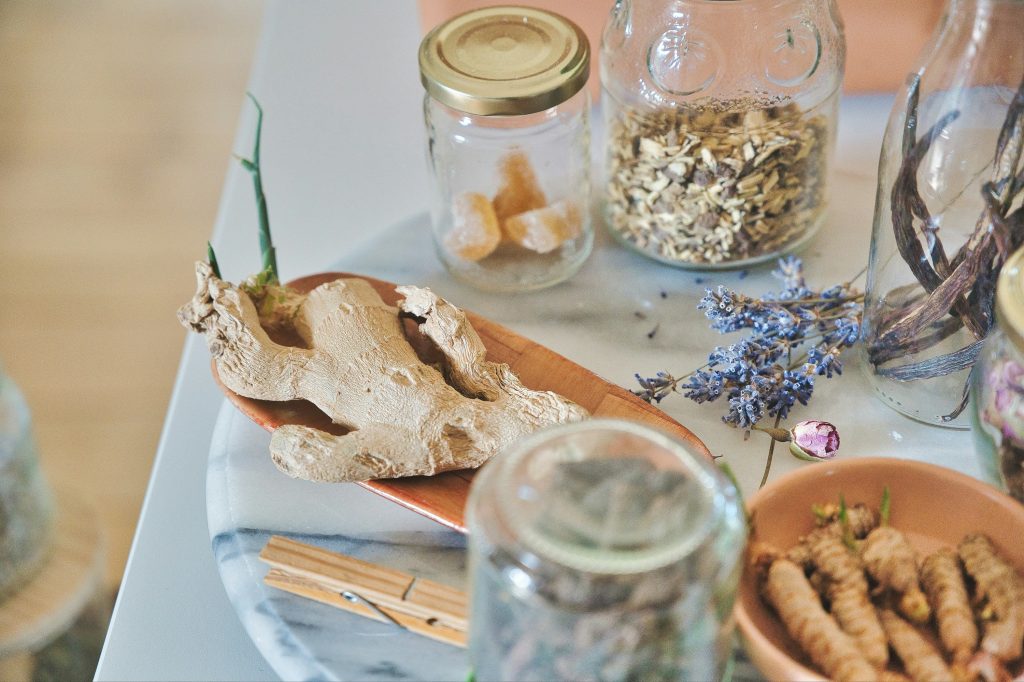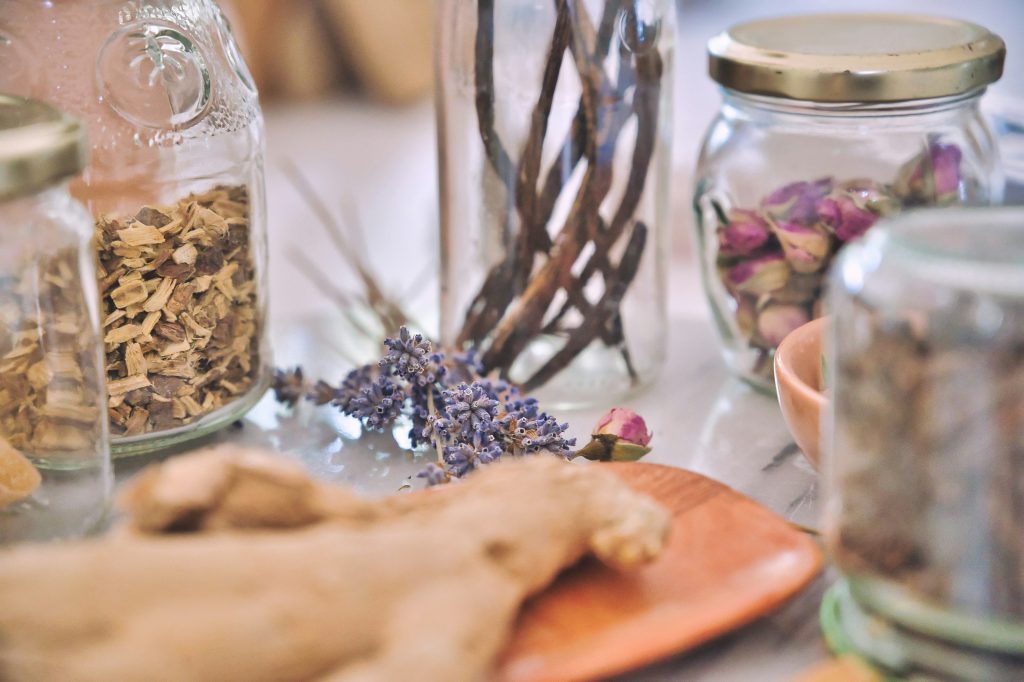Ginger or ginger root, scientifically known as Zingiber officinale, is a herbaceous perennial originated from Maritime Southeast Asia (Brunei, Indonesia, Malaysia etc.) that grows annually. Ginger belongs in the same family as tumeric, cardamom and galangal which are categorized as the Zingiberaceae family.

Throughout history, it has been commonly used for in cooking for its spicy and pungent flavor while aiding with digestion as an added advantage. Back in the days where we didn’t have canned foods or more convenient ways to preserve food, ginger was used as a preservative as it possesses anti-microbial properties.
It was, and still is, used for its medicinal purposes. In folk medicine, it is used to treat physical ailments such as arthritis, colds, fevers, menstrual discomfort, nausea and more. Whereas in Ayurvedic medicine, its oil is used to address various kinds of emotional stress such as low levels of confidence, low moods and nervousness.
Ginger essential oil has numerous benefits ranging from:
- Stimulates mental energy to boost cognitive function while combating fatigue and lethargy
- Soothe unwelcoming feelings such as anxiety, dizziness, irritability, motion sickness and queasiness
- Soothe sore muscles and menstrual cramps
- Induce a faster onset of sleep to improve sleep quality and address insomnia
- Possesses aphrodisiac qualities to improve low libido levels

There are a few ways you can use or incorporate ginger essential oil into your routine:
Diffuser Blends
Ginger essential oil diffused alone smells wonderful but if you like, you can blend it with other essential oils, too. Here are 2 diffuser blend ideas – one for overall emotional well-being, one to combat nausea. For diffusers with the standard capacity, 100ml, use 4-5 drops of essential oils. For 200ml water capacity, you may use 6-9 drops.
| Particulars | Blend for emotional well-being | Blend for combating nausea |
| 100ml water | 2 drops palmarosa/ginger 2 drops lime | 2 drops coriander/ginger 2 drops lemon |
| 200ml water | 3 drops geranium 3 drops ginger 3 drops lime | 3 drops fennel 3 drops ginger 3 drops lemon |
| What you can change about the blend | You can substitute palmarosa with geranium or rose, and lime with other citrus oils | You can substitute coriander (also known as coriander seed) with fennel or just omit it |
Massage
Many massage parlors will use ready-made, safe to use diluted ginger oils or blends as their massage oil for the above reasons mentioned. With proper dilution and a patch test done prior to home massage, provided you have no adverse reactions to the essential oils, you can create your very own ginger massage blend to give a soothing head massage or relaxing body massage.
Just like ginger, cardamom essential oil also helps address pain like muscle soreness and abdominal discomfort. Palmarosa essential oil provides relief to aching muscles, while addressing fatigue and feelings of stress and restlessness. Be sure to use this only at night as palmarosa is phototoxic. Essential oils can be combined in pain-relief blends like the Morphine Bomb, which is perfect for a massage.
Following a 2% dilution rate, combine 2 drops ginger oil + 2 drops cardamom oil + 2 drops of palmarosa oil with 1 tablespoon of carrier oil (use more carrier oil or less essential oils if you want a stronger dilution). Massage it on areas that require attention, you can also use ginger oil without other combinations.
Hair Care
To stimulate hair growth while nourishing the hair and scalp, you can also combine 3-6 drops of ginger essential oil with 1 tablespoon carrier oil (1-2% dilution, increase accordingly if needed). Massage your scalp with the mixture and leave it on for 30 minutes before shampooing. Despite its versatility and various benefits, just like other essential oils, ginger essential oil should be used in moderation and never to be ingested or used undiluted. Ginger oil is considered “warm” so it can be more skin sensitizing for oils that don’t fall into this category, therefore should be avoided in bath therapy.